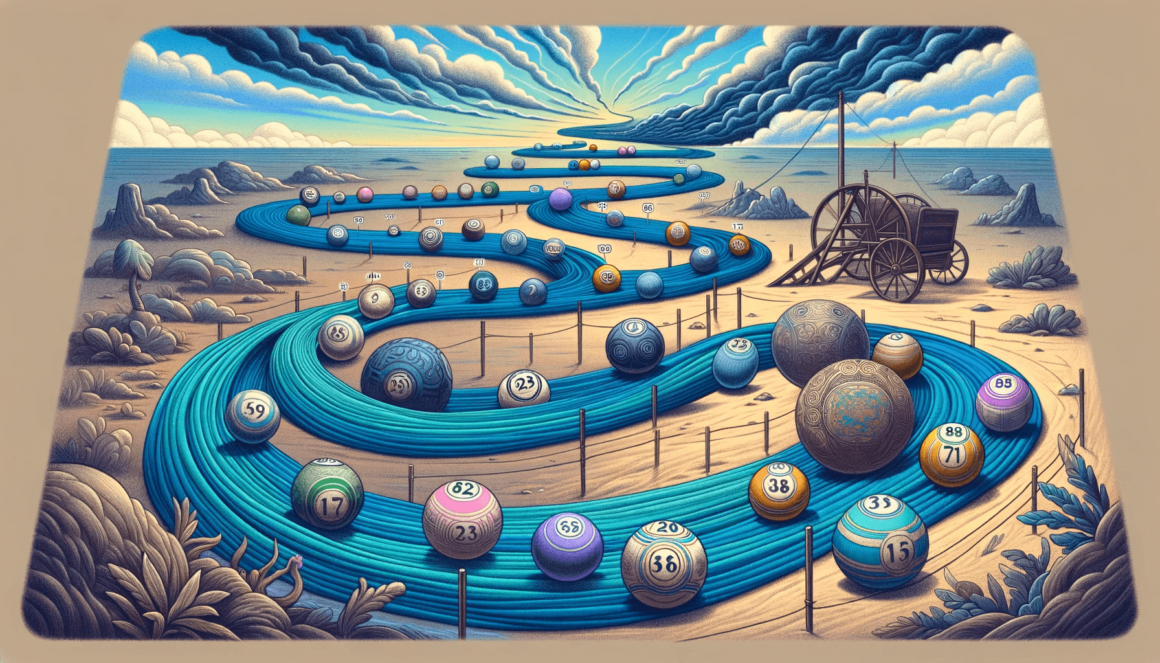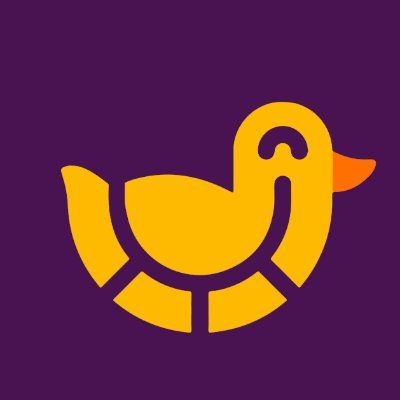What You Need to Know About the History of Bingo
Bingo’s popularity has remained constant over the years. This 493-year-old game is one of the most timeless activities worldwide and has changed much since its emergence.
It started as a simple Lotto game in Italy and France. Until it came to the US, people started to refer to it as “Beano.” That soon evolved to “Bingo,” a game where players mark off numbers in a card, racing to complete a pattern.
Bingo has been evolving, withstanding trends, surviving digitalization, and becoming available in different forms. Learn more about Bingo’s long history as you read on.
🏆 Top Bingo Gambling Sites
Based on all big and small factors, here are the best online Bingo sites:
- Ducky Luck (💰 500% Welcome Bonus up to $2,500)
- SlotsandCasino (💸 300% Match Bonus of up to $1,500)
- VegasAces (💸 $5000 Welcome Bonus)
Highlights of the Article
- Bingo was first introduced in 1530 in Italy as ‘Il Gioco del Lotto d’Italia.’
- Cards similar to the UK’s 90-ball Bingo emerged in France in the 1700s as a part of the game Le Lotto.
- In the 1800s, German educators used Le Lotto to sharpen children’s numbers, logic, and spelling skills.
- Hugh J. Ward brought Bingo to carnivals in Pennsylvania in the 1900s, propelling its popularity in the US.
- Ed Lowe stumbled upon ‘Beano’ in a traveling carnival in Atlanta, Georgia, in 1929, where he overheard it as ‘Bingo.’
- Bingo became popular in churches to raise funds, which peaked at 10,000 weekly games in 1934.
- Dr. Leffler, a mathematics professor at Columbia University, made 6,000 Bingo cards that contained random and unique numbers.
- In 1933, Hugh J. Ward copyrighted Bingo, but Ed Lowe mass-produced it in 1942 under his company.
- Cyberbingo.com was the first online Bingo ever, which emerged in 1996.
Timeline of the History of Bingo

Bingo is believed to have emerged in Italy almost 500 years ago. It was a lottery game different from the Bingo we know now. Word traveled fast about this entertaining game, reaching France late in the 1700s.
A century later, the game went to Britain and America, giving us the widely-played Bingo variations, such as 90-Ball and 75-Ball Bingo. Keno, another Bingo variation, also surfaced in the US.
There is so much more to find out about this game’s past. Let’s walk you through a more detailed history of Bingo.
The 16th Century
When Bingo was first introduced in 1530, it was very different. Bingo was first called ‘Il Gioco del Lotto d’Italia,’ which translates to ‘The Lotto Game of Italy.’ The 16th-century people of Italy played it every Saturday.
The mechanics of the original Bingo was way more straightforward. Players selected numbers that match the winning digit drawn from a drum.
The 1700s
Bingo got so popular in Italy that it reached the French gambling scene. When the French heard about it, they were immediately into it, especially aristocrats. They called it ‘Le Lotto.’
However, France put a twist into it that gave birth to the first Bingo card, similar to what the British 90-Ball Bingo uses. The card consisted of numbers in horizontal and vertical rows.
Meanwhile, numbers ranging from 1 to 90 were written on a small piece of wood. A designated caller draws the chips one by one from the cloth.
To win Le Lotto, a player must complete a single line in their card. That sounds about the closest thing to the Bingo we play today. However, the game has not stopped evolving in France.
The 1800s
The Germans saw another potential in Bingo. It is not just a social game, but it can also be a tool to educate.
German educators used Le Lotto to hone children’s number, logic, and spelling skills in the 1880s. This created several kid-friendly Le Lotto variations, such as:
- Animal Lotto
- Spelling Lotto
- Historical Lotto
The lotto cards for students are filled with words, animal names, and answers to math equations instead of just numbers.
Meanwhile, educators played the role of callers, drawing numbers or figures from a drum. Then, kids cross out any matches. To win a full house Bingo, students must spell out a word combination or number pattern.
During the same period, the standard game united communities and took over the UK. People in Britain regularly played it, whether they were grabbing a bite, catching up with friends, or both.
Locals in the UK also hosted large Bingo games in ballrooms. People flocked to such game events because they could win the following:
- Cash
- Luxury holidays
- Expensive appliances
To make the game more fun, the British population also came up with the ‘Bingo Lingo’ we hear today. Those are famous nicknames or calls for numbers and combinations in the game.
The 1900s
The game set foot in the US and UK in the 1900s. Its rich marketing history began in America, and the game was finally called ‘Bingo.’
1910s: Housey-Housey
UK’s troops coined a name for Bingo during WWI. It comes from yelling “House!” when they complete a full house pattern, which keeps their spirits up during the war.
As it gained popularity in the UK, the game was not yet known as “Bingo.” Instead, British people refer to it as “Housey-Housey” because that’s what the troops called it when they brought the game home.
1920s: Hugh J. Ward Standardizes Le Lotto
While the British played Bingo in ballrooms, Americans had their first taste of Bingo thanks to Hugh J. Ward. He incorporated the game into carnivals across Pittsburgh in the 1920s.
The mechanics of the game were similar to the UK’s: players get a card with numbers, a caller draws a numbered wooden disk, they announce the digit, and the first player to complete a pattern wins.
1920s: Beano
Players in the US started to call the game “Beano” because they used dried beans to mark off the numbers called on.
Out of excitement, players will shout “Beano!” when they complete the needed pattern, which wasn’t part of the rule at first.
1929: Ed Lowe Trademarks Bingo
The game gained popularity across the US because of traveling carnivals. That’s how Edwin S. Lowe, a New York toy merchandiser, encountered “Beano” in Atlanta, Georgia. However, he misheard it as “Bingo.”
Returning to New York, he brought the game to the gambling scene. He introduced it as “Bingo” in 1929. He led the game’s operation using the same equipment he saw in the carnival.
1930s: Church Bingo
A Catholic priest approached Lowe about using Bingo to raise church funds. That was how Bingo seeped through Pennsylvania and became more popular.
It was an effective way to fundraise for the church and to bring the community together. Gambling in most US states was illegal at that time.. However, Bingo games were permitted, filling many’s gambling needs.
1930s: Dr. Leffler’s Involvement in the Rise of Bingo
The thousands of Bingo games that took place attracted hundreds of players. The problem was there were only 12-card or 24-card groups distributed among players—the odds of that point to at least 2 winners per game.
Once, a priest had more than 10 winners using the same card sets in one game. He came to Lowe about this problem.
Then, Lowe approached Dr. Carl Leffler, who taught mathematics at Columbia University. Lowe commissioned Dr. Leffler to create a set of 6,000 unique cards, changing the odds of Bingo games then.
At that time, no AI tools or electronics existed to help Dr. Leffler to create the cards. He manually produced each random and unique card. That’s why after completing the project, some people said the professor went insane.
1933: Introduction of the Bingo Instruction Manual
Bingo hit America by storm. Hugh J. Ward, who first introduced it as a carnival game in the country, created a home version. In 1933, he registered a copyright and wrote Bingo’s rulebook, which describes it as:
“Bingo, a modern game adapted to commercial use, to advertise merchandise and to stimulate sales.”
1934: Increased Weekly Bingo games
In no time, Bingo became a weekly game. 10,000 games per week were held in 1934, most of which occurred in churches. Other non-profit organizations followed the church’s footsteps and used Bingo to acquire funds.
1942: E.S. Lowe Co. Mass-Produced Bingo
Ward failed to renew Bingo’s copyright, unfortunately passing away in 1941.
Lowe stepped in and mass-produced and patented Bingo in 1942, propelling its marketability further.
1960s: Betting and Gaming Act 1960
Bingo became a widely-accepted game in the UK, but there was one problem. Bingo was a non-state-approved lottery, which was illegal.
Then, one of the biggest laws in Bingo history was introduced. British authorities enacted the Betting and Gaming Act of 1960, legalizing commercial Bingo halls. This also paved the way for other gambling laws.
The law states that Bingo gaming venues must have a members-only club setup. Instead of paying entry fees, members must pay fees and other club charges.
1960s to 1970s: The Invention of Bingo Daubers
Players realized using beans as markers was not practical. Among many issues with this is if someone bumps into a table of players, the beans will move off the marked numbers. That leads to inaccurate results in the game.
There were several solutions for this, such as:
- Window cards
- Using plastic discs
Although they’re functional, they weren’t popular options. Instead, people loved Bingo blotters or daubers, which are ink bottles with a wide felt tip. Players use them to stain over the number on the card.
Blotters changed the game because they became sentimental for some players. They have a “lucky blotter” they bring to every Bingo game. Others personalize their marker by using different felt tip shapes and ink colors.
1973: Bingo Gets Sold for $26 Million
Bingo became the main entertainment in the 1950s. At that time, cinema’s popularity was declining because of the growth of television. With that, cinema venues turned into Bingo halls, helping propel the game further.
Meanwhile, Lowe’s company produced and distributed Bingo cards. Not only that, but he also made several other games popular, like Yahtzee. His company also manufactured board games like chess.
However, Lowe sold E.S. Lowe Co. to Milton Bradley in 1973 for $26 million and the Bingo rights. Lowe focused instead on pursuing other areas like producing Broadway plays and purchasing a motel in Las Vegas.
1986: The National Bingo Game
Since Bingo was legal and regulated, it became more widespread. That led to the establishment of the National Bingo Game in June 1986.
The National Bingo Game hosts 2 games of 90-ball Bingo every day of the year except Christmas Day, taking place in hundreds of Bingo clubs across the UK. These venues link up and have 200 to 300 players that race for the full house pattern.
1996: First recorded online Bingo in the UK
For centuries, Bingo survived worldwide trends and intense events such as wars. The game proved timeless once again when the digital age was afoot.
The first ever online Bingo site, CyberBingo.com, emerged in 1996. This paved the way for live Bingo formats in the UK.
The 2000s
Today, Bingo’s looks and mechanics are unrecognizable from when it was first played in 1530s Italy. As the world entered the age of technology, Bingo successfully evolved with it.
2005: The Texas Charity Advocates
Bingo became legal gambling in Texas in 1982. However, it must be played for charitable purposes only. Since then, Bingo has become the most charitable game in the state.
The Texas Charity Advocates was founded in 2005. It is a statewide organization licensed to operate Bingo games across Texas. The non-profit organization also educates the locals about the game’s critical role in its communities.
2006: The Largest Bingo Game is Recorded
Almacenes Exito S.A., the largest retailer in South America, organized the largest bingo game ever in 2006. The event took place in Bogota, Colombia. The Guinness World Records validated that 70,080 Bingo players were present that day.
Early 2010s: Emergence of Online Bingo
Several online bingo games were established in the late 90s. However, it wasn’t until the early 2000s that software companies like Microgaming developed large-scale online Bingo platforms.
In 2012, Bingo Blitz was released on Facebook, which was newly released as well. The game gained thousands of players, and now it’s available to download across devices.
Some websites where Bingo was available also offered online casino games, which helped spark the whole gaming industry. Other times there are sites dedicated solely to Bingo. The sites operated under a license so players can participate in games safely.
Final Thoughts
Bingo has come a long way from its emergence in Italy almost 5 centuries ago. It evolved in France, made the UK its home, and got commercialized in the US. These events in the game’s rich history prove Bingo’s adaptability.
No game will ever be equal to Bingo’s endurance over the years. It even made another mark during the peak of the COVID-19 pandemic, when people played the game together at a distance via communication platforms.
With that, it’s safe to say that Bingo will remain timeless and enduring in the years to come.
FAQ
What is the history of Bingo daubers?
Bingo daubers were introduced between the 1960s and 70s. They were a game changer in Bingo since using beans and other markers was less practical.
What is the theory of Bingo game?
The famous Tippet’s theory is often related to Bingo. It proposes that the more numbers to choose from, the more likely the drawn number will be based on the overall median value.
What is the most common Bingo number called?
The most common Bingo number called is 6. The next digits are 4, 42, and 62.
What is the most popular Bingo game?
The most popular form of Bingo is the 75-ball game, followed by the 90-ball version.
 BC.Game
BC.Game  7Bit
7Bit  Ducky Luck
Ducky Luck  Red Dog
Red Dog